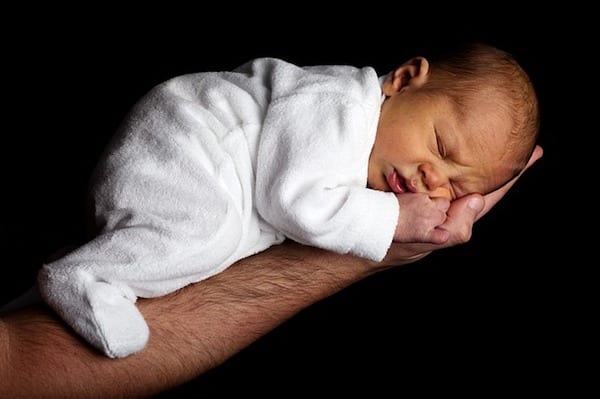Where is the utility in giving a family with a household income in excess of $350K any subsidy for their children to attend childcare? Is this entitlement gone mad? How greedy to expect a handout at that income level.
Perhaps, on an individual level, it may seem that way but it’s the collective consequences of withdrawing help – even to high income families – that I’m concerned with.
I wrote a newspaper column last week on the subject of a family in Victoria who will no longer receive any subsidy for their children to be in care.
They are both engineers and together they earn more than $350K. Without any subsidy – that just last week they were entitled to – they will now pay $800 a week for their son to attend childcare 3 days a week and their daughter to attend before & after school care on the same three days. Until this week that bill was $400.
Comment: Taxes that deter mothers from working are unfair | @georgiedent https://t.co/sDxENtZ9DT
— The Sydney Morning Herald (@smh) July 1, 2018
The premise of my piece was not “Woe is this poor family struggling to make ends meet’, nor was that my subject’s line of thinking.
Even still I knew the matter was unlikely to be warmly received. ‘Welfare’ for the wealthy doesn’t exactly tug on any heart strings and who could possibly disagree that government assistance ought to go to those most in need? How could anyone credibly suggest that a family earning more than $350K is a family in need?
So why, then, did I even write it? Why, then, do I believe there is any case for subsidising childcare for even ‘wealthy’ women?
The answer is because there is already a significant ‘motherhood penalty‘ that Australian women with children wear and anything that compounds it and further deters women from working is problematic.
The motherhood penalty describes the combined impact of the gender pay gap growing after women take time out of work to have children and their diminished earning capacity and opportunities for career progression over the course of their lives.
The motherhood penalty sees women discriminated against either during their pregnancy, maternity leave or return to work.
It sees mothers getting paid less and getting penalised for working flexibly or part-time.
Having children in Australia effectively puts women on a different track from their male peers which ensures the “male breadwinner” model, an amazingly resilient and stubborn phenomenon in Australia, continues to flourish.
A recent study led by the University of Queensland’s Professor Janeen Baxter concluded Australia has a “much stronger” male breadwinner culture than many other comparable nations, including the US.
The data says it all: There’s a significant ‘motherhood penalty’ in Australia & it's getting worse. Here's what @KZiwica learnt looking over a mountain of #genderequality research https://t.co/JvvbQP1peY
— Women's Agenda (@WomensAgenda) April 5, 2018
As Kristine Ziwica observed earlier this year far from shrinking the motherhood penalty is only getting worse for Australian women.
And over the course of their lives this penalty comes at a very significant cost: financial insecurity and vulnerability. And this isn’t hypothetical: the dismal average superannuation balances of women compared to men is alarming. So too is the fact women over 50 are the fastest growing group of homeless people in Australia.
But homelessness is hardly going to be an issue for a family earning $350K a year is it? Well perhaps not but the impact of a woman taking time off work – for any length of time – on her financial independence and security is real.
The collective impact of many women working less or not at all is also real.
One female engineer reducing her work hours or cutting back her days might not, in itself, spell disaster but when it’s part of a trend, when it’s several female engineers and lawyers and accountants, it does cause problems.
The childcare changes that have come into effect are estimated to adversely effect almost 300,000 families. Some of those are excluded from subsidised care on account of not meeting the activity test but many are caught by the means-test.
To be caught by the means-test they either earn a lot themselves, have a partner in a lucrative vocation or they both earn a well-above average salary. In two of these scenarios at least it’s likely the women are highly-skilled and potentially quite senior.
So when those women step back or scale down their work it means the leadership pipelines in all those fields and companies are less populated with women. It means more workplaces aren’t able to offer senior female role-models to challenge the enduring stereotype about leaders being male. It means younger men and women are denied the opportunity to see different ways of leading and living.
How much mothers work is directly influenced by how much childcare costs: we know that and the fact that in an ideal world the impact would be gender-neutral and influence dads in the same way doesn’t make it so. Dads do not base their capacity for work on the cost or availability of childcare to the extent mums do.
Far more dads work full-time than mums do. That means when we consider a means-test on childcare from the joint earnings it is, very often, the dad who is the main breadwinner and the mum is the ‘subsidiary’ earner.
In that instance, when the cost of childcare is so significant, who is more likely to give up, or wind back, their paid work? It is often the mum which just perpetuates the male-breadwinner cycle, which in turn perpetuates the various dynamics that enable the motherhood penalty to flourish.
The means-test on childcare is not a problem because it’s inherently unfair or unjust. It’s flawed because it further entrenches an already insidious structural problem for Australian mothers.



